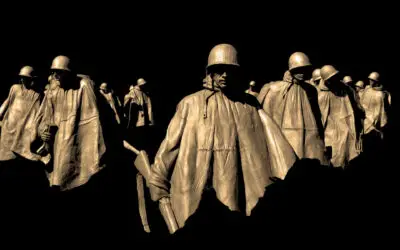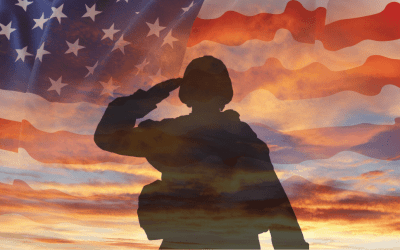John Wayne is a man who has fascinated film-goers for generations. People are still talking about the iconic roles in landmark films, and many people have attempted to imitate his distinctive drawl. But what makes John Wayne such a compelling character?
Perhaps the reason why John Wayne was such a compelling figure was not due to his appearance alone; it was certainly part of it, but there was more to him than just looks. Perhaps the most important thing is his attitude towards others; exuding power and confidence made others feel comfortable around him no matter what challenges might arise. In a world where people are increasingly disconnected from one another, John Wayne gave them the feeling that there was someone out there who they could rely on.
Wayne’s Origins
John Wayne was born Marion Robert Morrison on May 26, 1907, in Winterset, Iowa. He was raised in Glendale, California by his parents Clyde Leonard Morrison and Mary Alberta Brown. His father, Clyde, was a pharmacist and had a reputation for being hardworking and ambitious. His mother, Mary, was a homemaker known for her nurturing and kind nature. The Morrison family was considered middle-class.
Wayne had one younger brother named Robert. While Robert did work briefly as a film director under the name Robert North Bradbury Jr., he did not collaborate extensively with John. His brother primarily directed low-budget films and B-movies during the 1930s and 1940s.
How he got the Nickname “Duke”
John Wayne acquired the nickname “Duke” during his childhood years in Glendale, California. The origin of the nickname is often attributed to a family dog, which was named Duke. Young Marion Morrison was said to have the same look of the dog and was therefore called “Little Duke,” which eventually evolved into just “Duke”.
John Wayne’s Academic Record and Participation in Youth Organizations
In terms of academics, Wayne was an average student. He participated in sports and extracurricular activities, but he wasn’t particularly outstanding academically. He graduated from Glendale High School in 1925.
In his youth Wayne was a member of DeMolay, a youth organization for young men. His involvement in DeMolay likely influenced his moral beliefs and demeanor in several ways. Through DeMolay, he would have been exposed to a structured environment that emphasized principles such as honesty, loyalty, and service to others. These values would serve to reinforce Wayne’s sense of duty, patriotism, and commitment to standing up for what he believed in throughout his life and career. Additionally, the camaraderie and sense of brotherhood fostered by DeMolay contributed to Wayne’s strong sense of community and respect for others. Overall, his participation in DeMolay played a significant role in shaping his character and moral compass.
John Wayne Attends College and Plays Football for USC
John Wayne majored in pre-law while attending the University of Southern California (USC). And he played football receiving a scholarship to play as an offensive tackle for the USC Trojans. His game performance was solid, showcasing his athleticism and dedication on the field. However, Wayne’s football career was cut short due to a shoulder injury. The injury forced him to leave the team and ultimately led him to pursue other interests, including acting. Despite his early departure from football, Wayne’s time on the field likely instilled in him values such as teamwork, discipline, and perseverance. Personal qualities that would undoubtedly have an influence on his later successes in Hollywood.
After his football injury, he discontinued studies in law and shifted his focus toward a career in acting, participating in drama classes and honing his acting skills. These early experiences in acting classes helped pave the way for his eventual career in Hollywood.
John Wayne’s Start in Hollywood
John Wayne’s very first credited role was in the movie “Brown of Harvard” (1926), where he played a minor character named “Yardley.” He was selected for the role due to his athletic build and imposing stature. At the time, Wayne was working as a prop boy at Fox Studios, where the film was being produced. The filmmakers needed someone to portray a football player, and Wayne’s former experience playing football at USC and physical presence made him a suitable choice for the role. While his part in the film was small, it marked one of his earliest appearances in a motion picture.
Wayne got his breakthrough role in the movie “The Big Trail” (1930), where he portrayed the lead character, Breck Coleman. From that point Wayne appeared in numerous films and serials, steadily building his reputation as an actor.
While there isn’t a single mentor credited with launching his career, director John Ford played a significant role in shaping Wayne’s early years in Hollywood. Ford cast Wayne in several supporting roles, providing him with valuable experience and exposure. Some notable works include “The Drop Kick” (1927), “The Deceiver” (1931), and “The Hurricane Express” (1932), among others.
John Wayne’s Rise to Stardom
“Stagecoach” (1939) marked a turning point in John Wayne’s career, propelling him to stardom in Hollywood. In the film, Wayne’s portrayal of the rugged and morally upright Ringo Kid showcased his acting prowess and undeniable charisma, earning him widespread critical acclaim. Directed by John Ford, the movie not only achieved commercial success but also solidified Wayne’s reputation as a leading man in the industry. His collaboration with Ford proved instrumental, as the director’s mentorship helped shape Wayne’s career trajectory. “Stagecoach” catapulted Wayne from supporting roles to leading parts, firmly establishing him as an iconic figure in American cinema and laying the foundation for his enduring legacy.
Wayne’s Movie Career
John Wayne had a prolific movie career spanning several decades, appearing in over 170 films. While he is best known for his roles in westerns, Wayne also showcased his versatility by starring in a wide range of genres, including war films, adventure films, romantic dramas, and even comedies.
Wayne’s reputation as an actor was well-deserved. Critics often commented on his “inborn screen presence.” Even when he wasn’t playing one of his iconic roles, audiences found John Wayne compelling; this speaks volumes about his acting ability and the quality of the films he performed. As Bogle said, “What other actor has ever seemed like merely himself?” Few people even aimed for this distinction, but John Wayne caught it right out of the gate.
John Wayne Westerns’
John Wayne, often regarded as the epitome of the Western film genre, starred in numerous iconic Westerns throughout his illustrious career. These films represent just a glimpse of John Wayne’s prolific career in Western cinema, each contributing to his enduring legacy as a cinematic legend. While opinions may vary, here are ten of the most celebrated John Wayne Westerns:
1. “Stagecoach” (1939) – Directed by John Ford, this iconic Western follows a diverse group of travelers on a perilous journey through Apache territory. John Wayne stars as the Ringo Kid, a mysterious outlaw seeking revenge, alongside Claire Trevor as Dallas, a troubled woman ostracized by society, and Thomas Mitchell as Doc Boone, a drunken doctor with a heart of gold.
2. “Red River” (1948) – Directed by Howard Hawks, this epic Western chronicles a grueling cattle drive led by Tom Dunson, played by John Wayne, who clashes with his adopted son, Matthew Garth, portrayed by Montgomery Clift. As they navigate treacherous terrain and confront moral dilemmas, tensions escalate, testing their loyalty and resolve.
3. “The Searchers” (1956) – Directed by John Ford, this seminal Western follows Ethan Edwards, portrayed by John Wayne, on a quest to rescue his abducted niece from Comanche raiders. Wayne delivers a mesmerizing performance as a conflicted and vengeful protagonist, supported by Jeffrey Hunter as Martin Pawley, a half-Cherokee adopted nephew, and Natalie Wood as Debbie Edwards, the kidnapped girl.
4. “Rio Bravo” (1959) – Directed by Howard Hawks, this classic Western revolves around Sheriff John T. Chance, played by John Wayne, as he enlists the help of disparate allies, including Walter Brennan as Stumpy, a cantankerous deputy, and Dean Martin as Dude, a recovering alcoholic, to thwart a powerful rancher’s attempts to free his brother from jail.
5. “The Man Who Shot Liberty Valance” (1962) – Directed by John Ford, this thought-provoking Western delves into the blurred lines between myth and reality in the Old West. John Wayne stars as Tom Doniphon, a rugged rancher, alongside Jimmy Stewart as Ransom Stoddard, a principled lawyer, and Lee Marvin as Liberty Valance, a menacing outlaw.
6. “True Grit” (1969) – Directed by Henry Hathaway, this gripping Western sees John Wayne in an Oscar-winning performance as Rooster Cogburn, a grizzled U.S. Marshal hired by a determined young girl, Mattie Ross, played by Kim Darby, to track down her father’s killer, Tom Chaney, portrayed by Jeff Corey.
7. “The Shootist” (1976) – Directed by Don Siegel, this poignant Western follows an aging gunslinger named J.B. Books, portrayed by John Wayne, as he grapples with his mortality while facing one final showdown. Alongside Lauren Bacall as Bond Rogers, a widowed boarding house owner, and Ron Howard as Gillom Rogers, her impressionable son, Wayne delivers a stirring portrayal of a legendary figure confronting his legacy.
8. “Rio Grande” (1950) – Another collaboration with John Ford, this stirring Western focuses on Lieutenant Colonel Kirby Yorke, played by John Wayne, as he commands a cavalry outpost while dealing with personal and professional challenges. Maureen O’Hara stars as Kathleen Yorke, his estranged wife, and Claude Jarman Jr. as Trooper Jefferson Yorke, their rebellious son.
9. “El Dorado” (1966) – Directed by Howard Hawks, this lively Western pairs John Wayne as Cole Thornton, a hired gun, with Robert Mitchum as Sheriff J.P. Harrah, his old friend, in a tale of friendship, loyalty, and redemption. Together, they must defend a town besieged by a ruthless rancher, played by Ed Asner.
10. “She Wore a Yellow Ribbon” (1949) – The second installment in John Ford’s cavalry trilogy, this visually stunning Western showcases John Wayne as Captain Nathan Brittles, a seasoned cavalry officer on the eve of retirement. As he embarks on his final mission, Wayne is joined by Joanne Dru as Olivia Dandridge, a spirited woman caught between two worlds, and Ben Johnson as Sergeant Tyree, a loyal comrade facing an uncertain future.
John Wayne War Films
John Wayne’s screen presence was only one reason to watch his films; he also consistently agreed to take on roles that fit into cultural discussion topics of the day. Wayne starred in several notable war films throughout his career, showcasing his versatility as an actor and his commitment to portraying heroic characters in the face of adversity.
While World War II was raging in Europe, John Wayne started appearing in propaganda films for the US Armed Forces. When nuclear weapons came about during the Cold War era, so did many “Dawns Attack” movies featuring John Wayne. His willingness to present compelling viewpoints while becoming involved with topical issues is part of what made him so successful as an actor and a celebrity.
These war films showcase John Wayne’s talent as an actor and his dedication to portraying the bravery and sacrifice of military personnel in times of war.
1. “The Longest Day” (1962) – Directed by Ken Annakin, Andrew Marton, and Bernhard Wicki, this epic war film portrays the monumental events of D-Day from various Allied perspectives. John Wayne takes on the role of Lieutenant Colonel Benjamin Vandervoort, a courageous paratrooper commander leading his men into battle amidst the chaos of the Normandy landings. Co-starring alongside Wayne are Richard Burton, portraying Flying Officer David Campbell, and Robert Mitchum as Brigadier General Norman Cota, among others.
2. “Sands of Iwo Jima” (1949) – Directed by Allan Dwan, this classic war film follows the U.S. Marines as they face Japanese forces during the Battle of Iwo Jima. John Wayne delivers a memorable performance as Sergeant John M. Stryker, a tough yet compassionate Marine sergeant leading his men through the harsh realities of war. Supporting Wayne are Forrest Tucker as Sergeant Petersen and John Agar as Private Peter Conway, among others.
3. “The Green Berets” (1968) – Directed by John Wayne himself and Ray Kellogg, this Vietnam War film follows a group of Green Berets on a perilous mission behind enemy lines. Wayne stars as Colonel Mike Kirby, a tough and determined Green Beret commander leading his team through the challenges of combat. Co-starring with Wayne are David Janssen as George Beckworth and Jim Hutton as Sergeant Petersen.
4. “They Were Expendable” (1945) – Directed by John Ford, this World War II film depicts the heroic efforts of a PT boat squadron in the Philippines. John Wayne stars as Lieutenant (later Lieutenant Commander) John Brickley, the commanding officer of one of the PT boats, showcasing his leadership amidst the dangers of war. Supporting Wayne are Robert Montgomery as Lieutenant John “Brick” Davis and Donna Reed as Second Lieutenant Sandy Davyss.
5. “In Harm’s Way” (1965) – Directed by Otto Preminger, this epic war drama follows naval officers in the Pacific theater during World War II. John Wayne stars as Captain Rockwell Torrey, a tough and seasoned naval officer navigating the challenges of command and the harsh realities of war at sea. Co-starring alongside Wayne are Kirk Douglas as Commander Paul Eddington and Patricia Neal as Lieutenant Maggie Haynes.
6. “The Wings of Eagles” (1957) – Directed by John Ford, this biographical war film tells the inspiring story of Frank “Spig” Wead, a celebrated naval aviator. John Wayne delivers a memorable performance as Wead, showcasing his journey from personal challenges to becoming a revered aviator. Co-starring with Wayne are Maureen O’Hara as Min Wead and Dan Dailey as John Dodge.
7. “Back to Bataan” (1945) – Directed by Edward Dmytryk, this World War II film depicts the efforts of Filipino guerrillas and American soldiers to resist Japanese occupation in the Philippines. John Wayne stars as Colonel Joseph Madden, an American officer leading Filipino guerrillas in their fight against tyranny, displaying bravery in the face of adversity. Supporting Wayne are Anthony Quinn as Captain Andrés Bonifacio and Beulah Bondi as Bertha Barnes.
John Wayne’s Versatility as an Actor
While John Wayne was best known for his roles in Westerns and war films, he also appeared in a variety of other genres, including adventure films, romantic dramas, and comedies. These films demonstrate John Wayne’s versatility as an actor and his ability to excel in a range of genres beyond his more traditional western and war roles.
Adventure Films
1. “The Sea Chase” (1955) – Directed by John Farrow, this gripping adventure follows Wayne as Captain Karl Ehrlich, a German sea captain pursued by Allied forces during World War II. Alongside Wayne, Lana Turner stars as Elsa Keller, a passenger with a mysterious past.
2. “Hatari!” (1962) – Directed by Howard Hawks, this thrilling adventure is set in Africa, where Wayne leads a group of daring big-game hunters capturing wild animals for zoos. Wayne’s character, Sean Mercer, is joined by Red Buttons as Pockets, Elsa Martinelli as Anna Maria D’Allesandro, and Hardy Krüger as Kurt Muller.
3. “North to Alaska” (1960) – Directed by Henry Hathaway, this adventure unfolds during the Klondike Gold Rush, with Wayne portraying Sam McCord, a rugged gold prospector. Alongside Wayne, Stewart Granger stars as George Pratt, Capucine as Michelle, and Ernie Kovacs as Frankie Canon.
Romantic Dramas
1. “The Quiet Man” (1952) – Directed by John Ford, this enchanting romantic drama set in Ireland stars Wayne as Sean Thornton, an American ex-boxer returning to his homeland. Wayne is joined by Maureen O’Hara as Mary Kate Danaher, Barry Fitzgerald as Michaleen Flynn, and Victor McLaglen as Squire “Red” Will Danaher.
2. “The High and the Mighty” (1954) – Directed by William A. Wellman, this dramatic romance unfolds aboard a troubled commercial airliner. Wayne plays Dan Roman, a veteran pilot grappling with personal demons. The cast also includes Claire Trevor as May Holst, Laraine Day as Lydia Rice, and Robert Stack as Captain Sullivan.
Comedy Movies
1. “McLintock!” (1963) – Directed by Andrew V. McLaglen, this uproarious Western comedy features Wayne as George Washington McLintock, a wealthy cattle rancher navigating domestic and romantic entanglements. Wayne is joined by Maureen O’Hara as Katherine Gilhooley McLintock, Patrick Wayne as Devlin Warren, and Stefanie Powers as Becky McLintock.
2. “Donovan’s Reef” (1963) – Directed by John Ford, this lighthearted comedy follows Wayne as Michael Patrick “Guns” Donovan, a former Navy officer enjoying life in the South Pacific. Wayne’s character is joined by Lee Marvin as Thomas Aloysius “Boats” Gilhooley, Jack Warden as Dr. William Dedham, and Elizabeth Allen as Amelia Dedham.
3. “Trouble Along the Way” (1953) – Directed by Michael Curtiz, this charming comedy-drama stars Wayne as Steve Williams, a football coach who finds himself in amusing predicaments while attempting to revive a struggling team. Wayne is supported by Donna Reed as Alice Singleton, Charles Coburn as Father Burke, and Tom Tully as Father Malone.
Awards
Despite his numerous contributions to cinema, John Wayne’s only Oscar win came late in his career. In 1969, he won the Academy Award for Best Actor for his role as Rooster Cogburn in the western film “True Grit” (1969). This iconic performance earned him widespread acclaim and remains one of his most memorable roles.
In addition to “True Grit,” several other John Wayne films received recognition and accolades. “The Alamo” (1960) won an Oscar for Best Sound, while “The Searchers” (1956) and “Sands of Iwo Jima” (1949) received nominations in various categories.
John Wayne’s last film project was “The Shootist” (1976), a western in which he portrayed an aging gunfighter grappling with his mortality. Released posthumously, the film served as a poignant farewell to Wayne’s legendary career, showcasing his enduring talent and leaving a lasting impact on audiences worldwide.
John Wayne’s Enduring Legacy
In essence, John Wayne’s enduring appeal lies in his ability to embody the essence of American ideals while remaining an authentic and relatable figure on the silver screen. Though he passed away over three decades ago, John Wayne’s cinematic legacy remains as vibrant as ever. His films continue to resonate with audiences, serving as timeless reminders of the values that define America – courage, integrity, and honor. His legacy as the epitome of rugged heroism and unwavering patriotism continues to inspire generations, ensuring that the Duke’s legend lives on for years to come.














